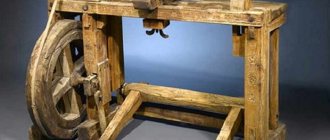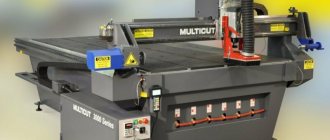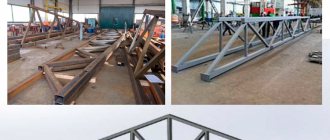What is CNC: all about CNC machines
Computer numerical control, or CNC for short, is a modern trend in the development of equipment for various purposes, based on the use of digital electronic devices in the control system. In Russia it is known as numerical control (CNC).
In essence, CNC is a computerized complex that controls the working parts of the equipment and controls the execution of the task. Any movements of the executive bodies are set by a special control program (CP) for this machine. It is composed of the necessary commands written in the CNC programming language (G- and M-codes). The computer stores the program program in its memory, and the operator can always use it to perform a specific job.
The modern CNC system has significantly expanded the capabilities of the previously used NC system. It is based on microcontrollers, programmable logic controllers, and microprocessor-based computers.
Feasibility of use
The CNC system significantly increases labor productivity and contributes to the reduction of workers, but its implementation requires significant costs and specially trained workers, which is not always economically justified. The use of CNC is advisable in the following circumstances:
- Production of high-value products when expensive and scarce raw materials are used. In this case, it is necessary to minimize errors and eliminate defects, which is what CNC provides.
- Production of similar products in large series. A proven program allows you to reduce costs and there is no need to change software, and the initial costs pay off fairly quickly.
- Manufacturing of complex parts requiring numerous technological operations.
- The need to ensure the production of numerous products that are absolutely identical in processing accuracy. The program ensures such production with a deviation of no more than 3 microns.
- Manufacture of products in the design of which minor changes are often made. When using CNC, they are easily entered into the NC from the machine operator console.
Important! Automation of production is a modern approach to its organization, but it requires an economic justification.
Functions
The CNC system is capable of performing the following functions:
- Management of processing processes for parts made of various materials (metals, wood, plastic, etc.). For this purpose, this system provides a machine park (CNC machines).
- Control of asynchronous electric motors. Their smooth adjustment is extremely difficult, and the CNC allows the use of “vector control”.
- Control of industrial robots.
- Management of peripheral devices for various purposes. Typical examples: 3D printers and scanners.
Some equipment is provided by centralized, automated workstations, where the desired program is installed via an industrial network. In this case, CNC allows you to control the operation of not just one machine, but the entire section, workshop (ABB Robot Studio, Microsoft Robotics Developer Studio).
Peculiarities
CNC machines have a number of attractive features:
- High level of automation. The operator only controls the process on the monitor. His participation in the process is kept to a minimum.
- Ensure repeatability. The equipment does not depend on the mood and physical condition of the operator. It produces identical products with consistent high quality for months, or even years.
- One operator is able to operate several machines.
- Flexibility. With minor changes in process parameters, adjustments are made to the program, and with significant changes, a new program is loaded. Such procedures do not take much time.
- Processing accuracy and repeatability. The program ensures the production of many identical parts with the highest accuracy.
- Using CNC machines, it is possible to produce products of complex shapes that can only be done by highly professional workers, and even then using special devices.
Important! CNC machines are versatile and can replace 4-5 simple machines. In this case, there is no need to look for experienced workers in a specific specialty; it is enough to train an operator of CNC equipment.
Classification
CNC machines are divided into several categories. This is reflected in the alphanumeric designation of the brand. The technological category is determined by the purpose of the equipment. It is determined by the possibility of carrying out basic operations. Main types: lathes (group number - 1), milling machines (number 6), drilling and boring machines (number 2), multi-purpose equipment (number 9). This number comes first in the marking.
According to the degree of automation, the following types are established:
- F1 - motion coordinates are set using the computer keyboard (one press - 1 frame of the program). A digital display device is provided.
- F2 - a portion or rectangular control system is used. The first is typical for drilling and boring machines, and the second is typical for milling and turning machines.
- F3 - a contour or continuous CNC system is installed. It allows you to process workpieces of almost any complexity.
- F4 is a multi-operational, combined CNC system. It combines the best qualities of the contour and positioning system.
- C - cyclic CNC. This is the simplest automated system for serial production of fairly simple, similar products.
Machines are also classified according to the method of changing the working tool. The labeling may include the following options:
- R – turret heads are used to change and fasten tools.
- M – a special tool magazine is installed, from where the necessary tools are automatically supplied.
The indicated marking indicates the presence of an automatic tool changer (ATC). In addition to the above modifications, the machines differ in the type of drive control: stepper, stepped, continuously variable.
Main settings
When choosing CNC equipment, main attention should be paid to the following parameters:
- Accuracy class. The permissible error can be determined by the markings: P - increased accuracy, B - high accuracy.
- Operating parameters. They are installed for each technology category separately. So for drilling equipment the maximum diameter of the hole is important, for milling machines - the size of the working area, for boring machines - the spindle diameter, for lathes - the dimensions of the workpiece, etc. Common to all types of equipment include: electric motor power, processing speed ( productivity), supply voltage (220 or 380 V), dimensions and weight of the machine.
- The number of simultaneously controlled coordinates and the accuracy of their setting. Modern machines provide 5-axis control.
Depending on the purpose of the equipment, other important parameters may be set that must be taken into account when organizing production.
Programming principle
The operation of a CNC machine depends on the NC. It can be based on the following programming principles:
- Manual method. The programmer creates the software part of the machine by entering digital information about the coordinates of movement of the working tool, obtained during manual movement. Many points are required, which delays the programming process. This method is used when there are only 1–2 CNC machines used for the manufacture of simple, similar products.
- Shop-floor – programming from the remote control of the CNC operating system. In this case, the program is compiled using a touch screen and a joystick on the machine stand. The latest machine models use an interactive mode.
- Programming using CAD and CAM systems. The CAD system (AutoCAD, Solid, Catia, Compass) allows you to construct an electronic drawing of the product, and the CAM system (SheetCam, Kcam. MeshCam, CorelDraw) based on it describes the tool trajectory. The graphic file is first converted to DXF, Exeilon, HPGL or Gerber format. The programming process is reflected on the screen. A Cl file is issued. To convert it into a form understandable for the machine, a special program (postprocessor or passport) is used. It provides commands in the form of G- and M-codes.
The program can be loaded onto the machine in finished form from external media (floppy disks, flash media, magnetic tapes, punched paper tapes). It fits in RAM, memory card, hard drive or solid state drive.
Design features
The functioning of the CNC system is ensured by the following main components:
- Operator console, input/output console. This design element is intended for entering the NC, setting process parameters, as well as manual control of the operation.
- Operator panel, display. Allows you to visually monitor the process and make adjustments to the program.
- Controller. This is a computer-type device for putting into operation the software, forming the trajectory of the working body, issuing the necessary commands, carrying out general control, carrying out diagnostics and additional calculations.
- ROM. This is a memory that allows you to store a program for a long time. Information from the ROM is only read.
- RAM. This RAM is intended for programs currently in use, as well as for short-term storage of information.
Industrial ready-made models, embedded devices based on microprocessors, a programmable logic-type controller, and an industrial computer can serve as controllers. The role of actuators is performed by servos and stepper motors.
Types of CNC machines
The most common CNC equipment includes milling and lathes, as well as multi-purpose units. They are selected taking into account what work is planned to be carried out and in what volumes.
Milling machines
CNC milling machines can be used only for milling or with extended functionality (drilling, cutting sheets, processing at different angles, forming grooves, etc.). Main varieties:
- Vertical milling machines. In them the spindle is installed vertically. May have bottom or top drive. Processing is provided on one side.
- Horizontal milling machines. The spindle is installed parallel to the base. The machine can perform all-round processing.
Both types of machines can have 1 or 2 spindles. Control is provided in 3–5 coordinates. According to the control method, the following options are distinguished: with positional, contour, combined control. Basic parameters of the machines: work table dimensions, milling depth, power, spindle speed, transmission type.
Among the design features, we should highlight the presence of a powerful frame, a body with stiffening ribs, a spindle with increased rigidity to eliminate vibrations, and high-precision guide rails. To increase productivity, ASIs are installed in the form of a turret-type spindle head or a tool magazine. A large number of different models are produced for processing wood, metal, plastic and other materials.
Turning
A CNC lathe uses cutters with replaceable inserts. The tool is mounted in a tool holder located in the caliper assembly. To carry out various processes, cassette-type tool holders with the ability to attach up to 12 different cutters are often used.
The most popular varieties:
- Centering machines. Processing is carried out by turning along the contour of the workpiece. Parts of cylindrical and conical shapes, as well as shaped products are manufactured.
- Cartridge machines. They can be used to process both the outside and the inside of the workpiece. Basic operations: threading, countersinking, drilling, turning to install flanges, discs, bushings and gears.
- Combined (chuck-center) machines. Combines the capabilities of both types.
- Carousel machines. They are necessary for processing large parts and irregularly shaped workpieces.
The design features of CNC lathes are: vertical or inclined layout, increased rigidity of elements, ASI system.
Multipurpose
Complex processing of parts is carried out on multi-purpose machines (machining centers) with CNC. For them, special mixed UEs are used. The machines provide the following operations: milling, countersinking, boring, cutting, threading and chamfering. They can belong to the drilling-boring or turning-grinding group.
Multi-tasking machines differ in types:
- Horizontal machines. They carry out one-sided processing of large workpieces.
- Vertical machines. Capable of processing from 3 to 5 sides using a rotating spindle.
Among the design features, the following stand out: the presence of tool stores for ASI, rotary tables for moving workpieces, devices for changing workpieces. Most often, high-torque electric motors with low inertia are used.
Technology and processing features
If you configure the software control correctly, it becomes possible to process different surfaces of the workpiece from one installation. On a CNC-equipped milling machine, you can perform several technological metal-cutting operations:
Countersinking.- Deployment.
- Drilling.
- Milling a curved plane.
- Machining a cylindrical surface.
For such work, three coordinate axes are used. Five axes are used for complex machining. For example, processing a shaped surface at high speed.
A large number of axes makes it possible to rotate a part in a certain direction relative to one axis and at the same time move the tool relative to the workpiece. Quite often, the spindle axis, tilted at a certain angle, becomes the fifth coordinate.
Processing of radius fillets, after appropriate CNC settings, occurs in one fixation. For this purpose, special end mills with a characteristic rounding of the cutting edge are used.
Any CNC milling machine can be upgraded. It is enough to add a rotating mechanism to the desktop. The device will be able to carry out processing in five different coordinates. True, such modernization reduces the working space of milling equipment.
CNC master what is this position?
A CNC machine foreman or operator is a person who works on this equipment and provides its maintenance. In addition to him, a CNC adjuster is needed who enters and corrects the NC. These specialties can be combined - master adjuster.
Operators have the following job responsibilities: machine maintenance, process control, checking and testing finished products, eliminating minor problems, adjusting components, preparing working tools. It operates on the basis of a job description, which is approved by the enterprise itself. The master can service several machines at the same time. The CNC operator carries out the following work: development of the NC, inputting it into the machine and testing, setting up equipment for specific processes.
Training of operators and adjusters is provided in colleges (technical schools) or in special courses in the specialty “Mechanical Engineering Technology”. In order to become a professional, a worker must acquire the following knowledge: the structure and features of CNC machines, processing technology, the basics of CNC programming, principles of working with computerized systems, signs of malfunctions of CNC equipment, features of various tools and materials. When working, the operator must strictly observe safety precautions.
CNC machines are increasingly being introduced into production. They are capable of providing high precision machining of parts at high speeds. At the same time, the economic feasibility of their use should be taken into account. There are many high-quality models offered on the Russian market, and you need to choose the best option for specific conditions.
- August 30, 2020
- 10679
Important equipment parts
Usually the bed is made cast. The design is very rigid and has damping potential. If the shape of the frame has a complex structure, they resort to welding.
Any machine tool must have sliding guides. Due to the force of friction, the speed of movement of the working mechanisms becomes minimal. Linear guides provide high precision movement.
For processing, the workpiece is fixed in a machine spindle, which has several types:
- Rotor with electric motor.
- Rotation is carried out using a belt drive.
The rotor spindle rotates at a speed of 100 thousand rpm. min. This mechanism is installed on machines that process complex stamps, as well as various molds.
Belt drive does not develop such high speed. Usually about 15 thousand revolutions. It is designed to work with simpler parts.
Popular milling equipment
In Russia, machine-tool enterprises produce milling machines equipped with CNC, which can be found at many machine-building enterprises.
- 6Р13ФЗ. The machine has three coordinates and several high-torque electric motors. The device is equipped with adaptive control and has a control system “N33−2M”. The feed speed of the end mill is 4800 mm/min.
- 6M11FZ. Very easy to maintain milling machine. Programming of work operations is carried out within a few minutes in accordance with the technological process.
- LF66FZ. Milling machine, vertical design, equipped with a cross work table.
- VCenter N-400. Produced in Taiwan. Special horizontal center designed for machining structural steels and aluminum. At the same time, the device’s magazine includes 40 cutting tools. It is possible to increase this number to 90 pieces.
- VCenter-55/7. Equipment for processing non-ferrous metal blanks.
- AX-800. The milling center has five axes and shows high productivity.
Equipment manufactured abroad also remains in demand. The most popular machines are:
- Hurco.
- Zenitech.
- ARES-SEIKI.
- Yangli.
- KNUTH.










